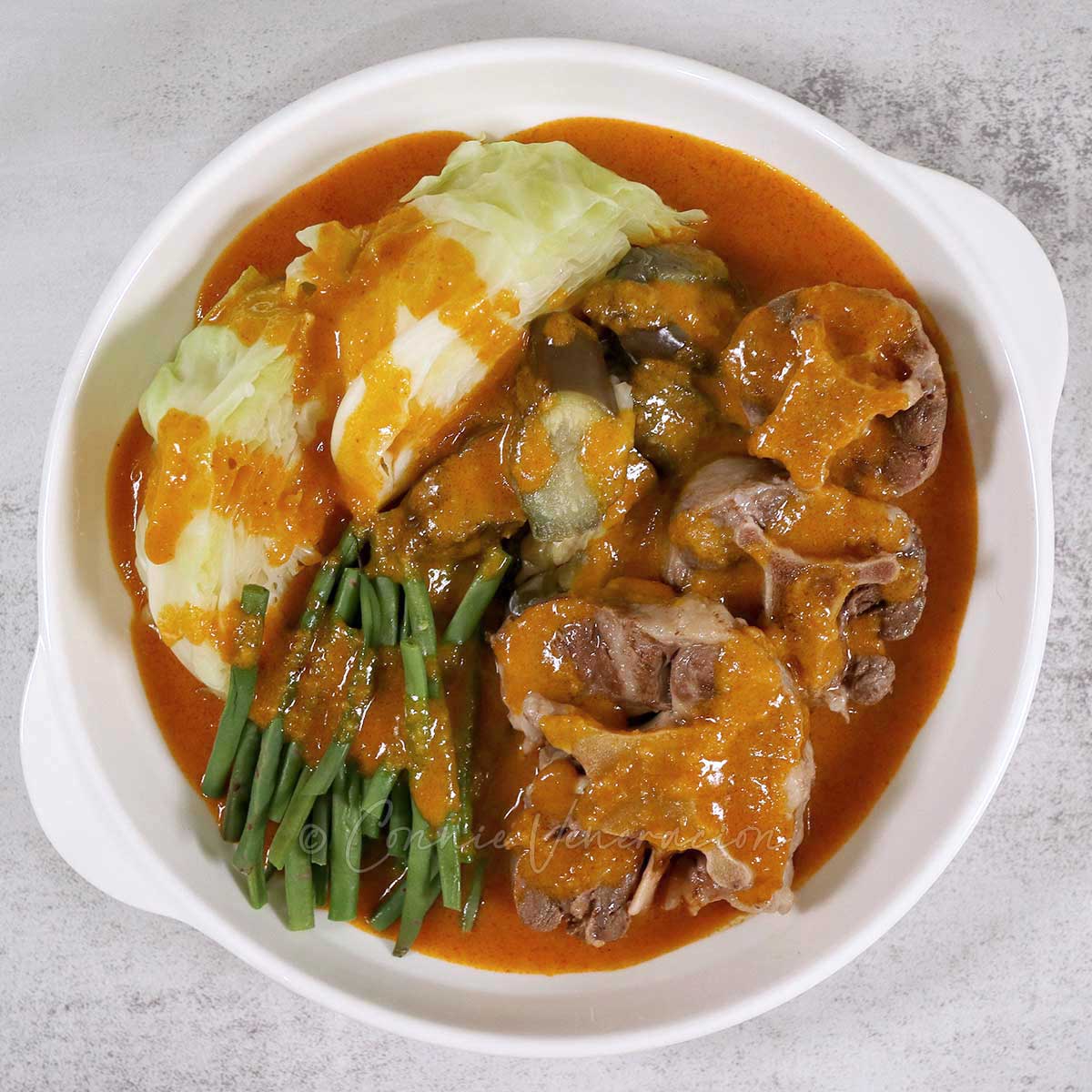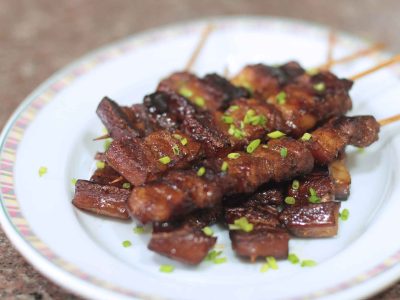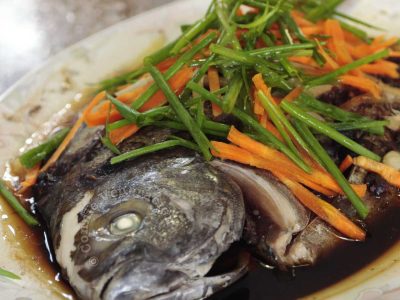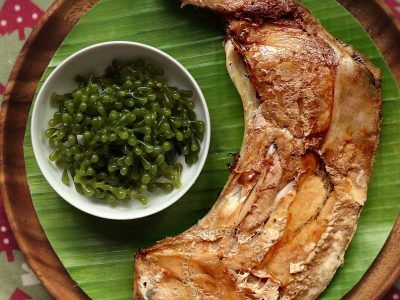Beef offal, including oxtail, take such a long time to tenderize that making kare-kare is often considered too work-intensive for an everyday dish. But is that so?
The key to the best kare-kare is to prepare the three components — meat, vegetables and sauce — separately. Breaking down the work also makes the dish more doable even for the not-so-seasoned cooks.
Prepping and cooking oxtail
Although you can use just about any meat for cooking kare-kare, if you want to go the traditional route, then you’ll want beef offal. Whether it’s a mixture of different organ meats or just one variety, remember that when cooking offal, you have to make sure to remove any strong smell.
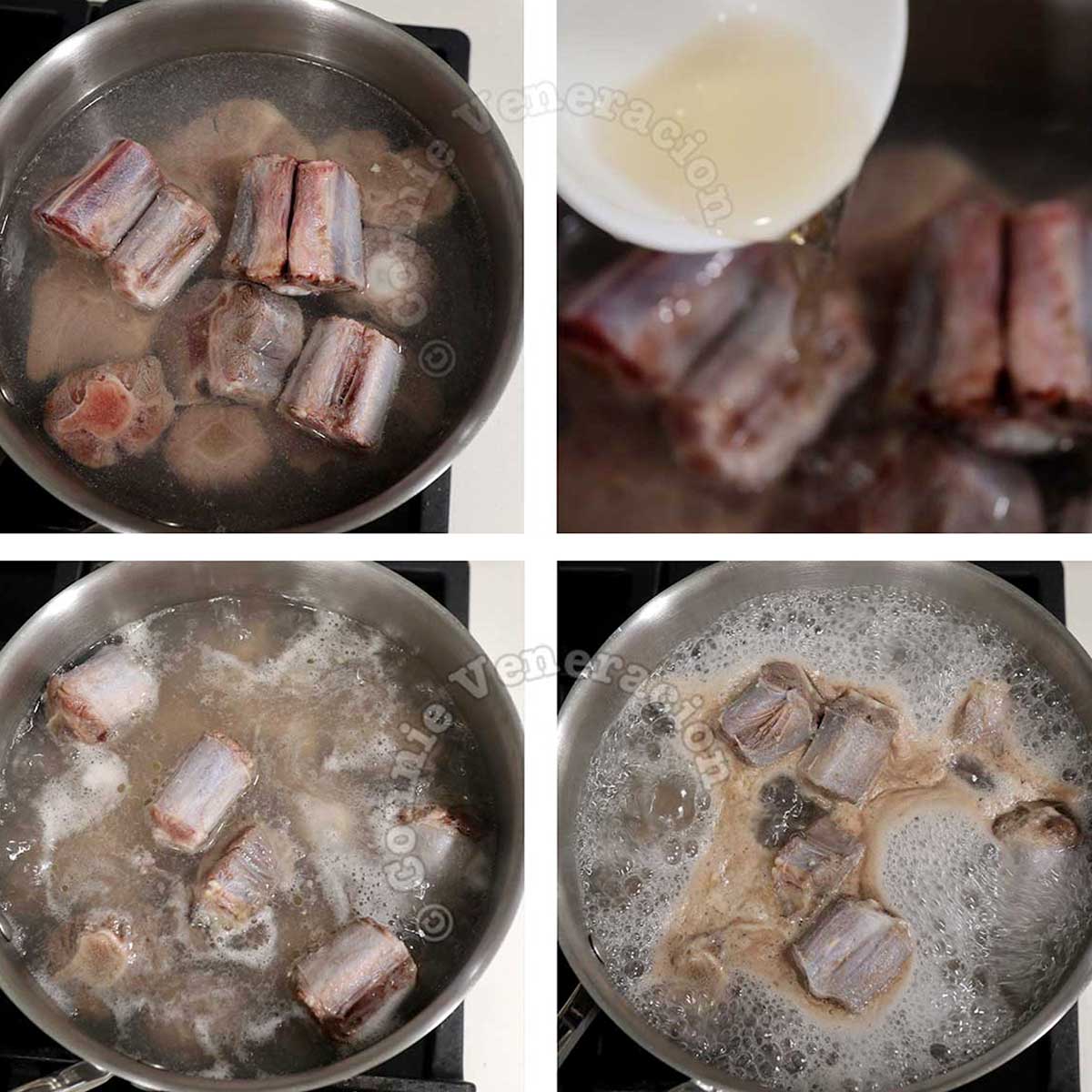
I do this by parboiling the meat in plenty of water with a little vinegar until the surface of the water is covered with scum. I drain the meat, rinse it well and then transfer it to a slow cooker and add clean water. Won’t the meat smell vinegary? No. You won’t taste nor smell the vinegar at all.
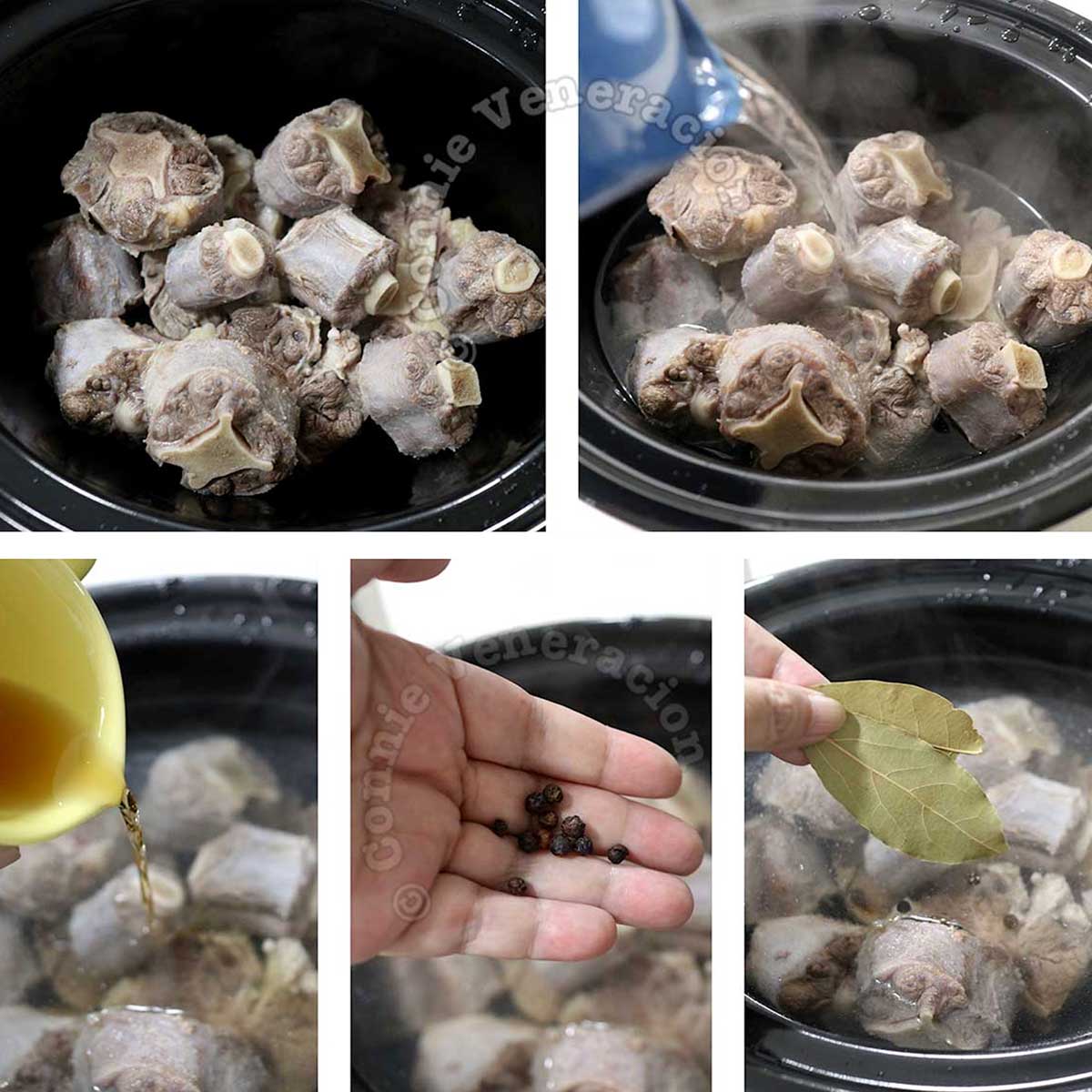
The rinsed oxtail pieces go into the slow cooker. Boiling water is poured in so the cooking commences as soon as you turn on the cooker. To flavor the meat, fish sauce, peppercorns and bay leaves are thrown in.
The best kare-kare sauce
We don’t use pre-mixed powdered sauces at home. I understand the convenience but products like that won’t allow you the opportunity to understand the significance of each ingredient and how they interact with one another until a sauce is formed.
There are three things that make a good kare-kare sauce. The texture, the color and the flavor. To put all that in the sauce, you’ll need a thickener (ground toasted rice), a coloring agent (achiote oil) and, for flavor, the broth in which the oxtail had simmered and peanut butter.
I used to take short cuts by toasting rice flour in an oil-free pan and use it as the thickener for my kare-kare sauce. But I have since discovered that toasting glutinous rice and grinding it into a powder gives kare-kare sauce better texture. The nutty aroma and flavor of the toasted rice is more pronounced too.
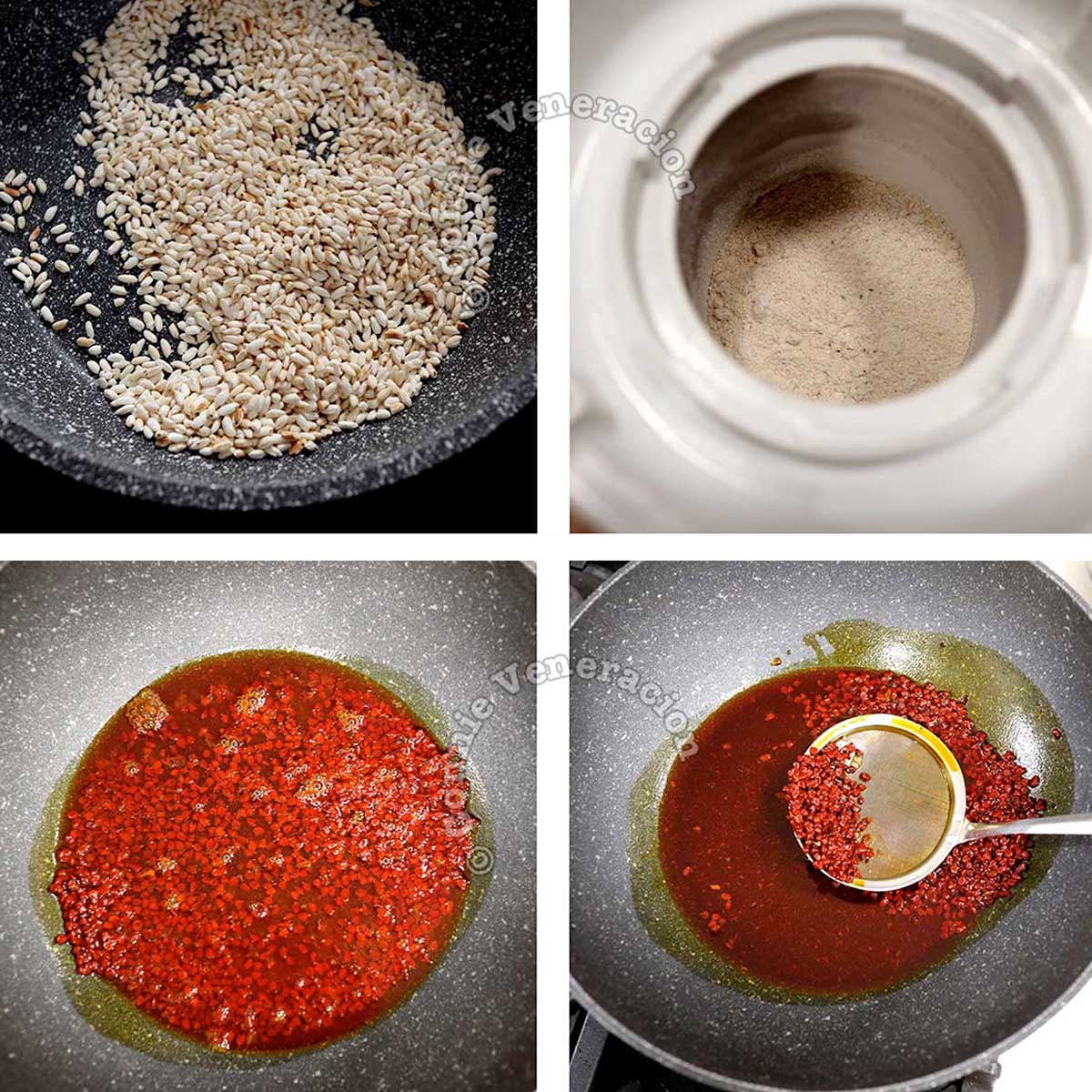
To give the sauce its vibrant color, I simply heat annatto seeds in oil. Once the oil has turned a bright red, I scoop out the annatto seeds and discard.
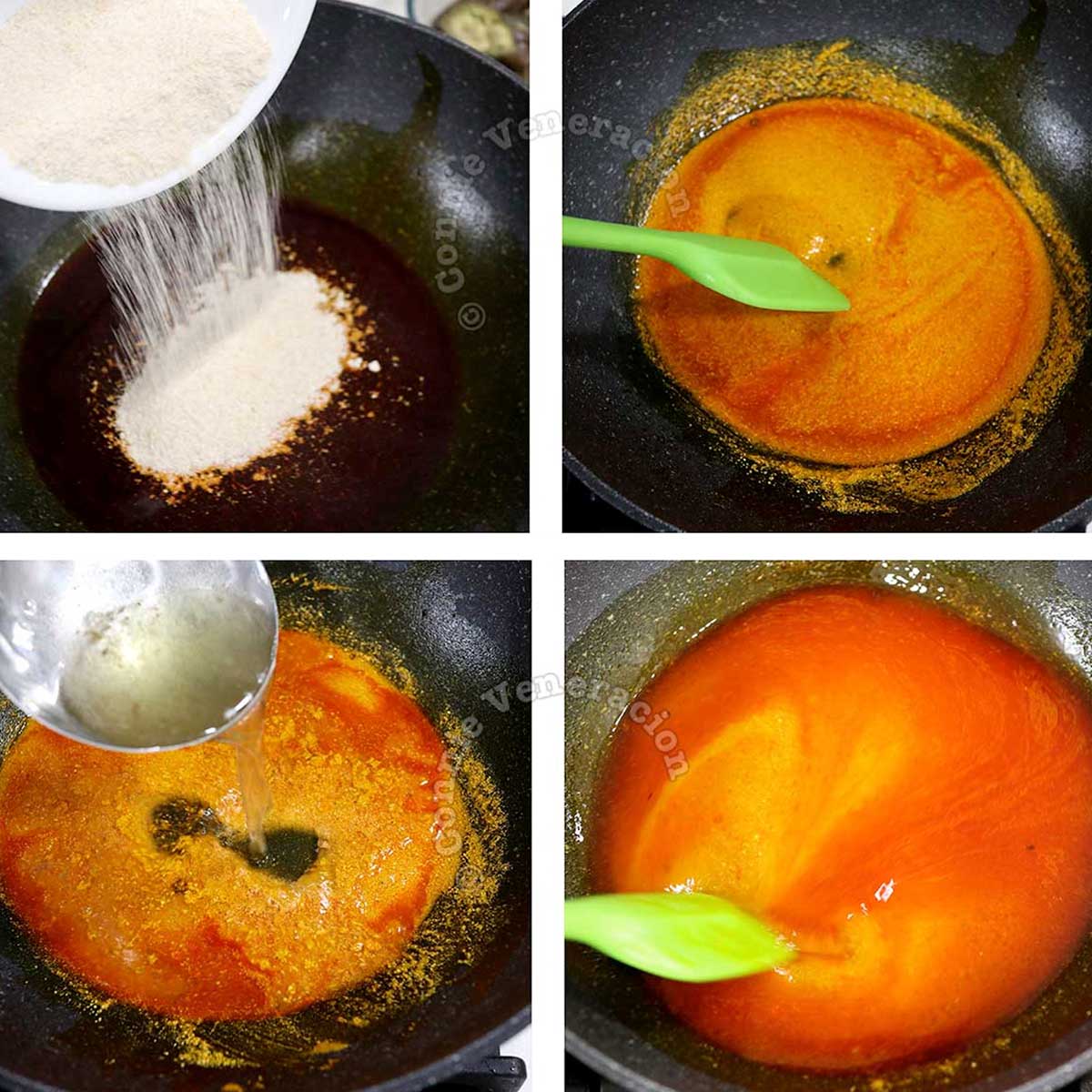
To heighten the nutty aroma and flavor of the ground toasted rice even more, I use it to make a roux. I add the powdered rice to annatto oil and cook them together for a few minutes before pouring in the broth and stirring until the sauce thickens.
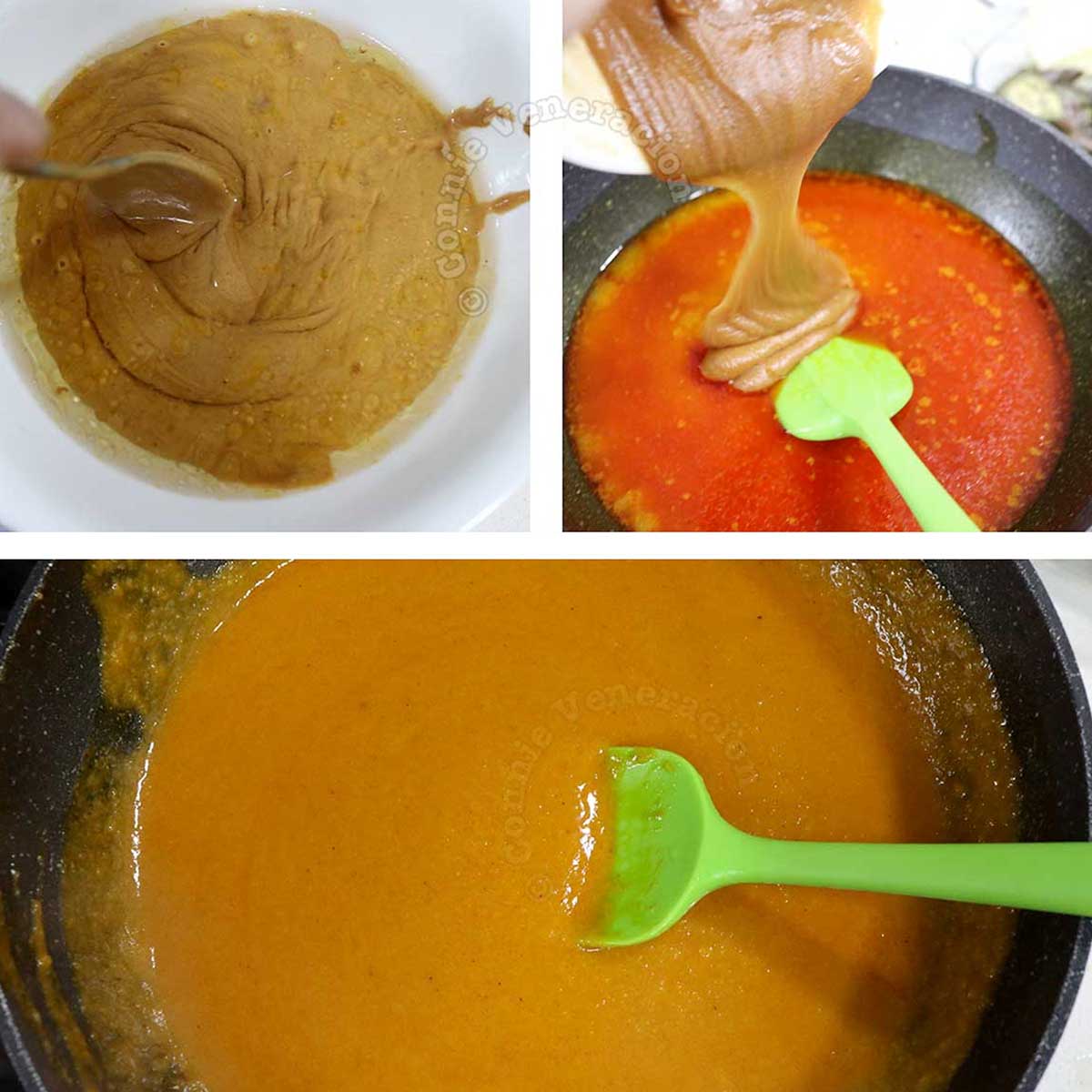
Th make sure that the peanut butter dissolves into the sauce, I first stir it with hot broth. When the peanut butter has thinned out and no longer separates from the broth, I add it to the sauce in the pan.
Cook the vegetables in water (or broth), not in the sauce
A common mistake which I used to be guilty of. I used to think that when the sauce was ready, I only needed to dump in the vegetables and let everything simmer merrily until the vegetables were cooked through. In my defense, I thought that the process gave the vegetables more chance to absorb the flavors in the sauce.
But it was really a recipe for disaster. Cooking the vegetables in the sauce means the sauce continued to thicken until the vegetables were done. And that meant being forced to add more liquid to prevent the sauce from scorching.
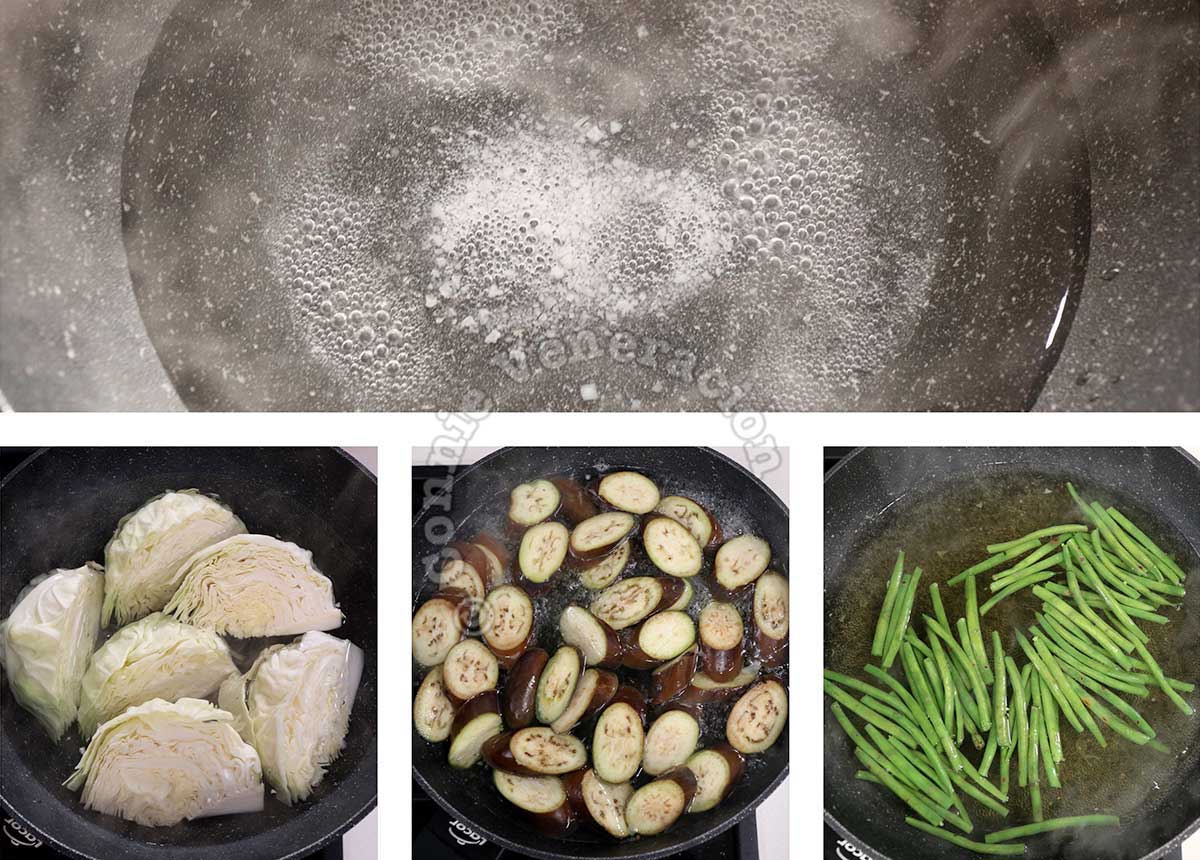
The better way is to cook the vegetables separately. It takes just one pan, really. Boil water, add salt (or use the broth in which the meat was cooked) and cook the vegetables one by one. Kare-kare requires a mix of vegetables and some need to cook longer than the others. So, to make sure that every vegetable is cooked perfectly, don’t dump them into the pan at the same time.
When you’re done with the meat, sauce and vegetables, you just assemble. Arrange the meat and vegetables in a bowl and pour the sauce over them.
Kare-kare (oxtail and vegetables in peanut sauce)

Equipment
- Slow cooker
- Mini food processor
Ingredients
Meat
- 1 kilogram oxtail cut into serving-size pieces
- 2 tablespoons vinegar
- 2 tablespoons fish sauce
- 1 teaspoon peppercorns
- 2 bay leaves
Kare-kare sauce
- ¼ cup glutinous rice
- 3 tablespoons palm oil
- ¼ cup annatto seeds
- 6 to 8 cups broth (oxtail cooking liquid)
- ½ cup smooth peanut butter
- fish sauce
Vegetables
- 1 tablespoon salt
- 1 white cabbage cut into wedges
- 3 eggplants cut into half-inch rings
- 300 grams green beans trimmed and cut into three-inch lengths
Instructions
Cook the meat
- Place the oxtail pieces in a large pot and cover with water.
- Pour in the vinegar and bring to the boil.
- Leave to boil uncovered for about ten minutes or until the surface of the water is covered with scum.
- Drain the oxtail and rinse thoroughly.
- Place the cleaned oxtail into the slow cooker and cover with boiling water (to start the cooking immediately).
- Add the fish sauce, peppercorns and bay leaves.
- Cook on LOW for six to eight hours (the actual cooking time depends on the quality of the meat and the age of the animal it came from).
Make the kare-kare sauce
- Spread the glutinous rice in an oil-free frying pan and set over medium heat.
- Cook, stirring often, until browned and nutty in aroma.
- Cool the toasted rice before grinding into a powder (use a mini food processor or a mortar and pestle).
- Pour the palm oil in a pan and add the annatto seeds.
- Heat until the annatto seeds have rendered color.
- Scoop out the annatto seeds and discard.
- Add the ground toasted rice to the annatto oil and stir quickly to make a roux.
- Cook, stirring often, for a few minutes.
- Add broth, half a cup at a time and stirring after each addition, until you get the consistency that you prefer (how thick or thin kare-kare sauce should be is a matter of preference).
- Place the peanut butter in a bowl and add a few tablespoons of broth. Mix well until smooth.
- Pour the peanut butter mixture into the simmering sauce and stir until fully incorporated.
- Taste the sauce and add as much fish sauce as needed to get a good flavor balance.
Cook the vegetables
- Boil plenty of water in a pot and add the salt.
- Drop in the cabbage wedges, cover and simmer until softened then scoop out.
- Bring the water to a boil once more, add the eggplant slices and cook until done but not mushy.
- Scoop out the eggplants, drop in the beans and cook until done.
Assemble your kare-kare
- Arrange the beef and vegetables in a shallow bowl and drizzle hot sauce over them. Serve with more sauce on the side.
Notes
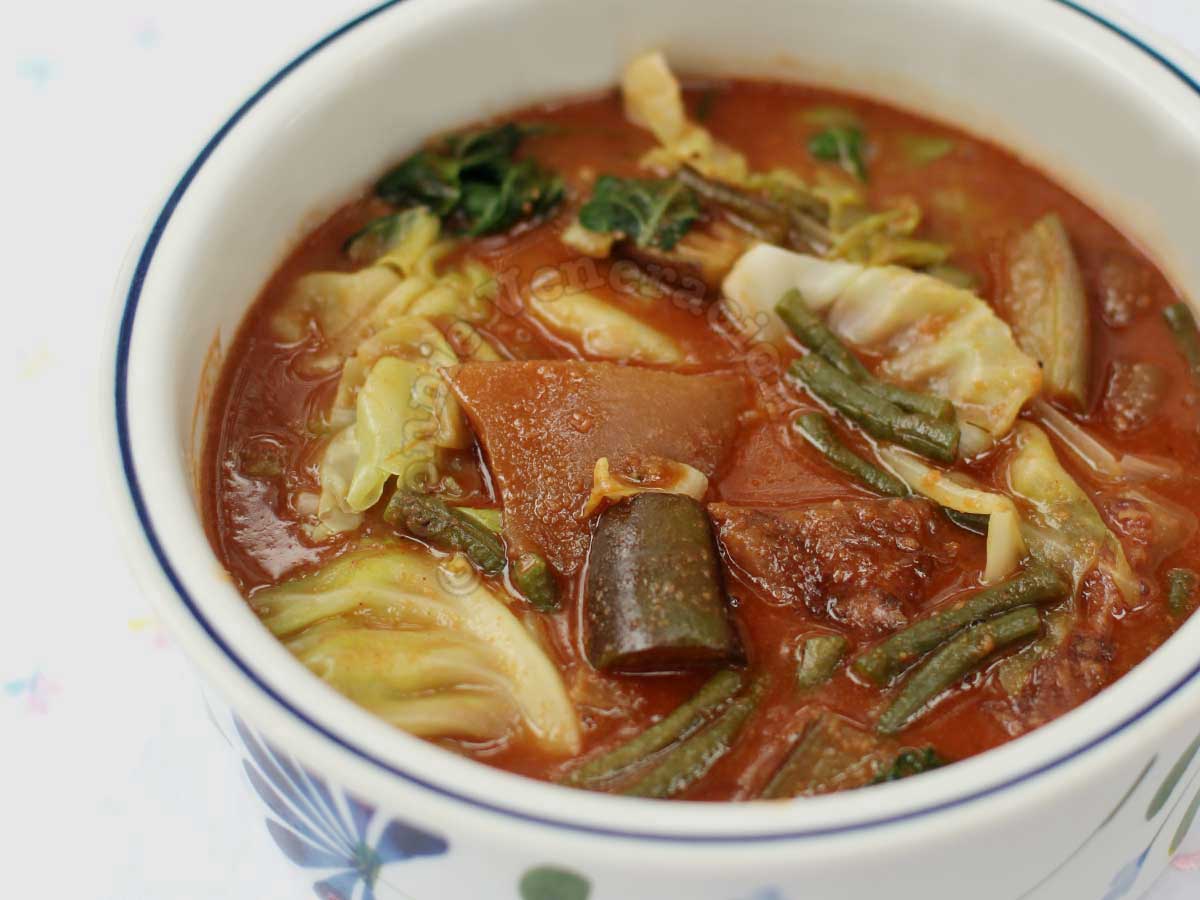 Bring the sauce to a simmer, add the cooked meat and vegetables, stir and wait until simmering. Transfer to a serving bowl and serve.
If you’re not a fan of offal but a serious fan of crispy pork belly, there’s crispy pork belly kare-kare.
Bring the sauce to a simmer, add the cooked meat and vegetables, stir and wait until simmering. Transfer to a serving bowl and serve.
If you’re not a fan of offal but a serious fan of crispy pork belly, there’s crispy pork belly kare-kare.
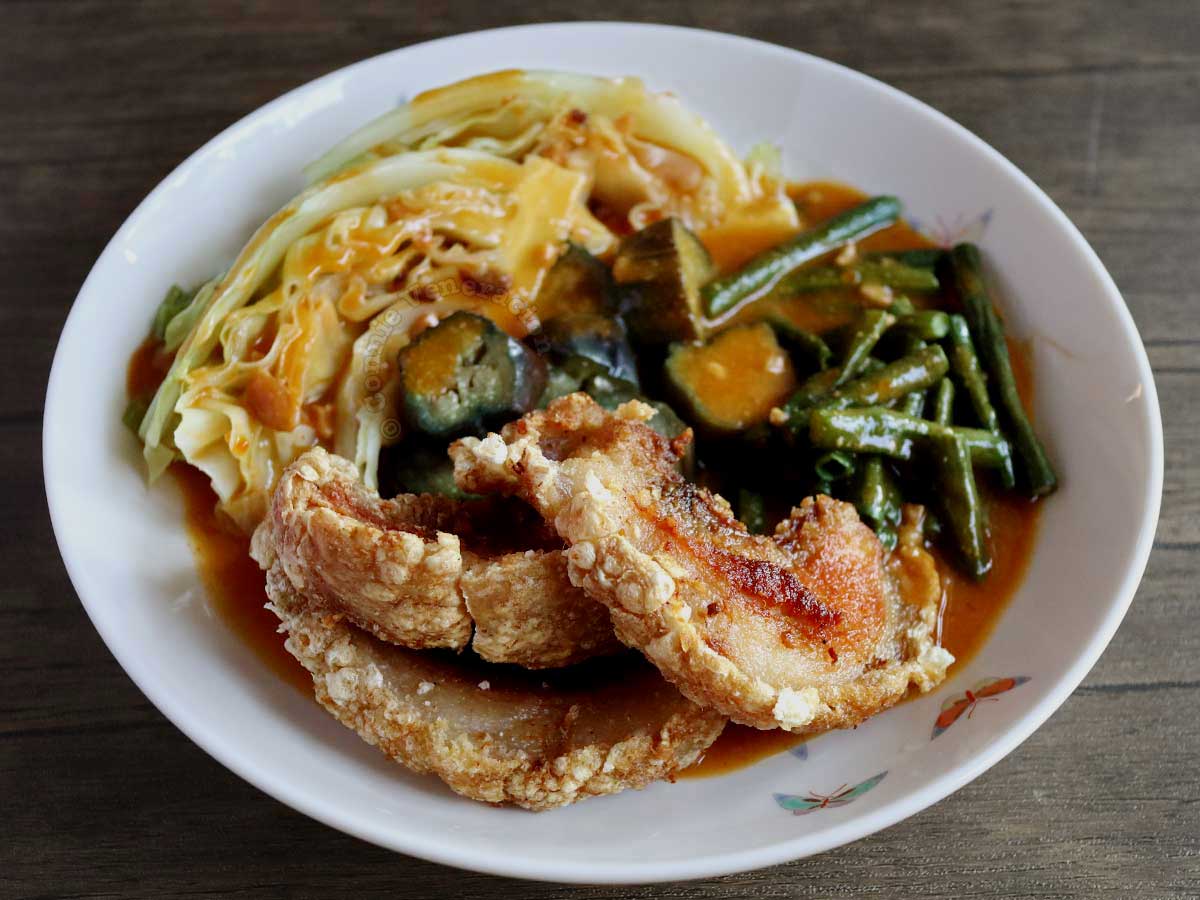 Make the sauce using bone broth, prepare the vegetables per the recipe above, arrange the vegetables and crispy pork belly in a bowl, pour in the sauce and serve.
Make the sauce using bone broth, prepare the vegetables per the recipe above, arrange the vegetables and crispy pork belly in a bowl, pour in the sauce and serve.
